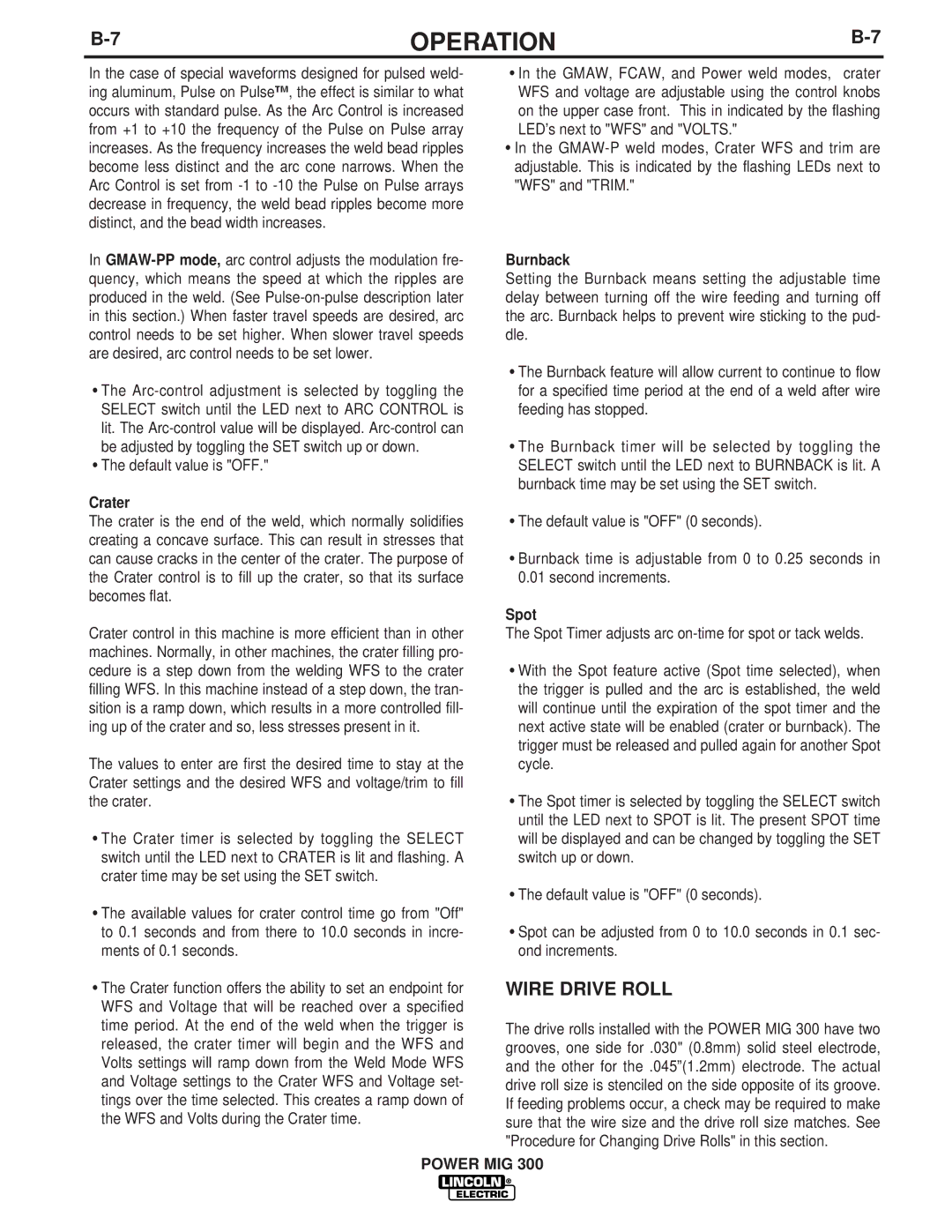IM736-D specifications
The Lincoln Electric IM736-D is a state-of-the-art industrial welding machine designed to meet the demanding needs of modern welding operations. Known for its robustness and versatility, this machine is specifically engineered for high-performance applications, making it an essential tool for professionals in various sectors, including construction, manufacturing, and maintenance.One of the main features of the IM736-D is its advanced control system, which allows for precise adjustments to be made during the welding process. This feature provides welders with the ability to tailor their settings for different materials and thicknesses, ensuring optimal results every time. The machine also incorporates digital technology, providing an intuitive interface that simplifies operation and enhances user experience.
The IM736-D is built with a durable construction, ensuring longevity and reliable performance in high-demand environments. Its robust chassis is designed to withstand the rigors of daily use, while also being lightweight enough for easy transport between job sites. This balance of strength and portability makes it an ideal choice for contractors and fabricators alike.
In terms of welding technology, the IM736-D utilizes inverter technology, which contributes to its compact design and energy efficiency. This cutting-edge technology allows for quicker response times and stable arc performance, thus reducing the likelihood of defects in the weld. The machine supports various welding processes, including MIG, TIG, and Stick welding, making it a versatile option for a wide range of applications.
Additional characteristics include a built-in wire feeder, which facilitates seamless operations and minimizes downtime. The IM736-D also features advanced safety systems, such as overcurrent protection and thermal overload indicators, enhancing the safety of the operator during use.
Overall, the Lincoln Electric IM736-D stands out for its combination of innovative features, user-friendly technology, and robust construction. With its ability to deliver high-quality welds across various materials and welding processes, it remains a top contender in the industrial welding market, offering reliability and performance for professionals who demand the best.
